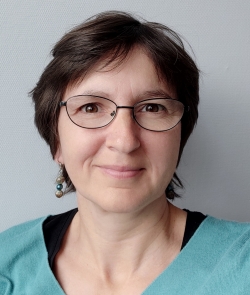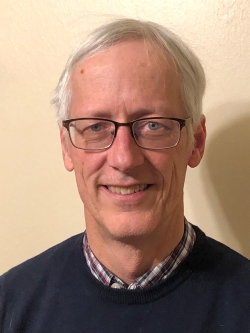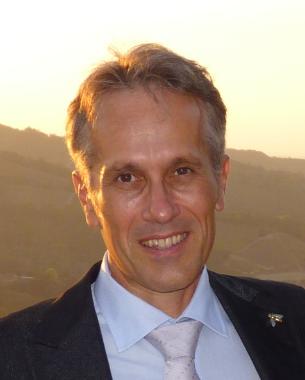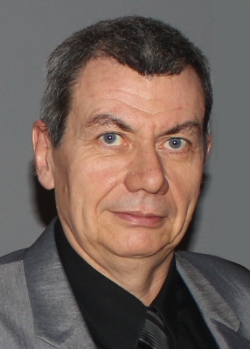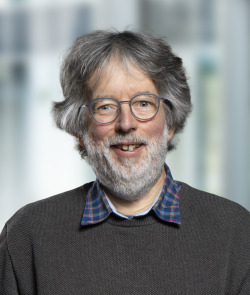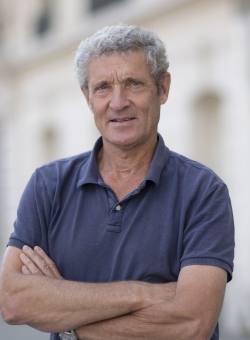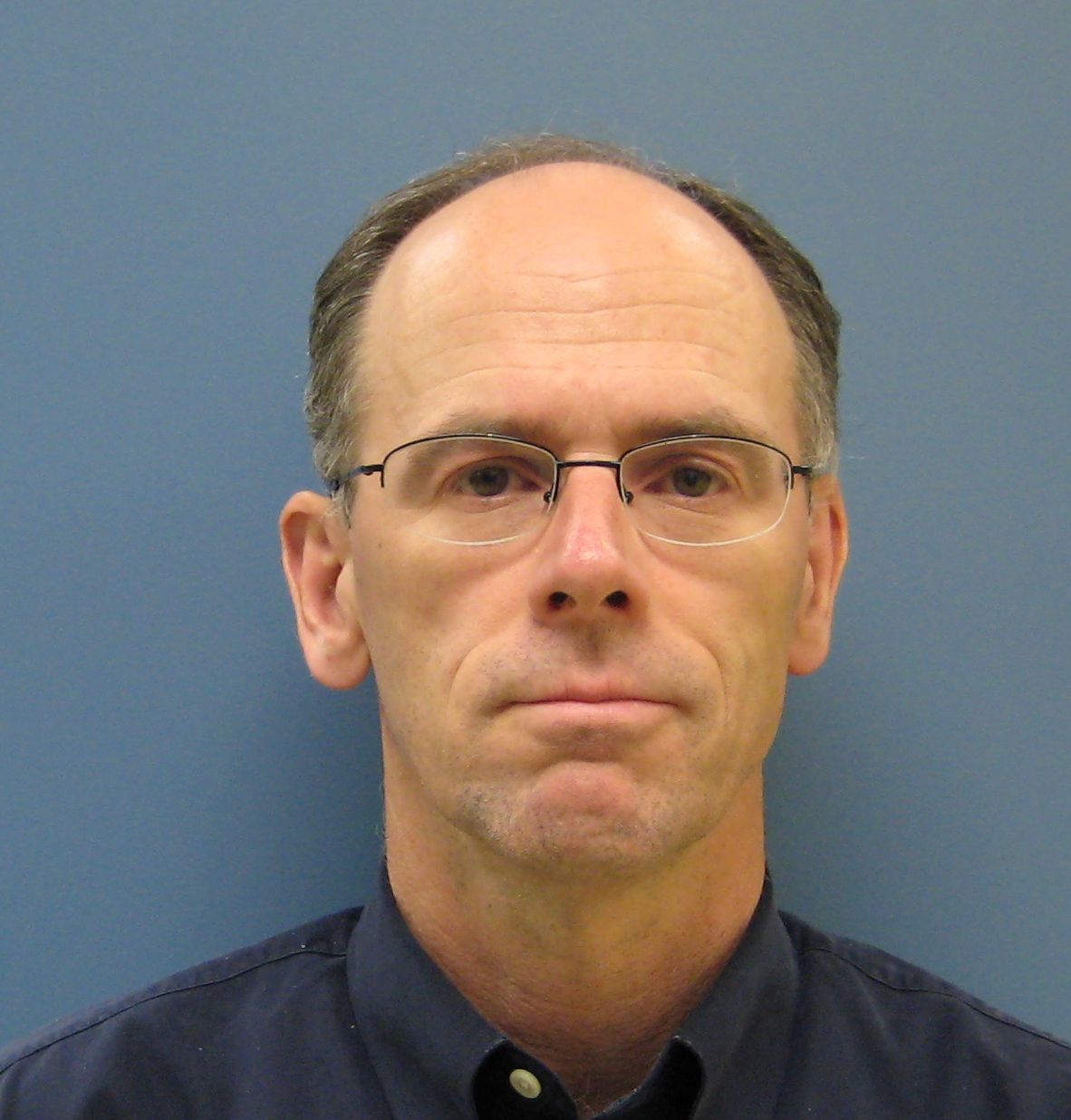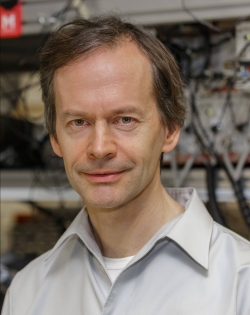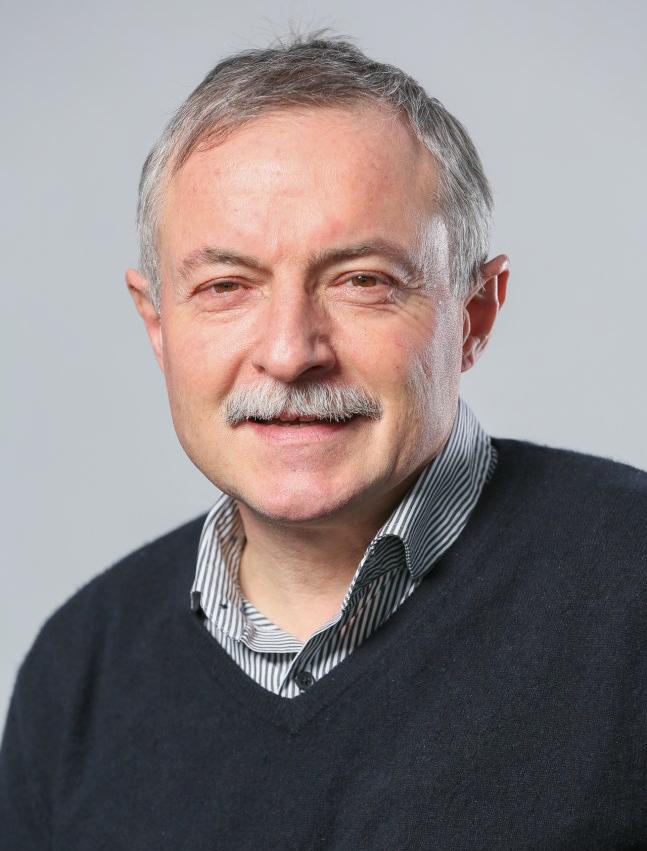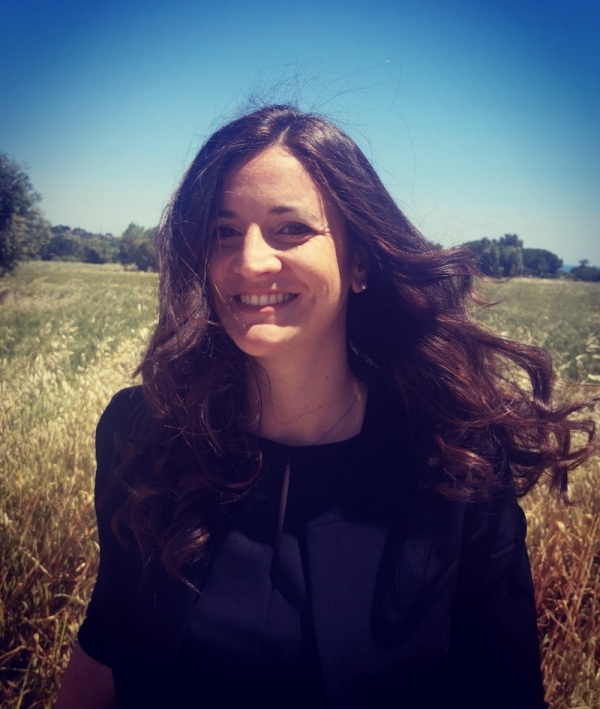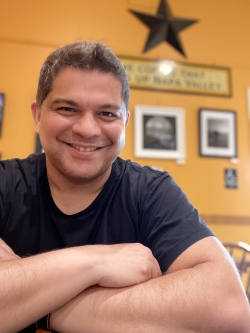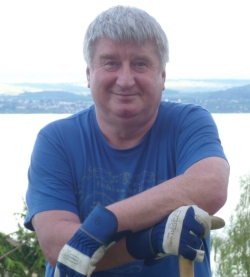|
|
|
Program > Tutorial speakersThe conference will propose three parallels tutorial tracks on Sun. April 24th 2022. The tutorials are expected to be given on-site. They will be recorded and available for students who registered the virtual tutorials plan. Confirmed speakers:Track 1:
Track 2 :
Track 3 :
AbstractsPascale Defraigne, Royal Observatory of Belgium
Title: Time transfer by satellites Abstract: Satellites are an ideal relay to transfer time and frequency to a remote location. They can be used for time dissemination as well as for remote clock comparisons. In this tutorial, we will mainly detail the current operational techniques used by the timing community, i.e. the Global Navigation Satellite Systems (GNSS) and the Two Way Satellite Time and Frequency Transfer (TWSTFT). We will furthermore give an overview of the current developments using Low Earth Orbit satellites, and using optical links to satellites. Nate Newbury, NIST, USA
Title: Optical time & frequency transfer over fiber and free-space Abstract: Optically based methods of time-frequency transfer have been developed to support long distance connections between clocks over both fiber-optic networks and free-space (i.e. the air). As with optical clocks, these methods often exploit the high coherence possible with cavity-stabilized lasers and frequency combs. I will discuss and compare the approaches of optical time-frequency transfer over fiber optics and free space. The tutorial will discuss the basics of fiber-optic based methods, which are now well-developed and varied, and will then focus in more detail on recent work in free-space time-frequency transfer. Claudio Calosso, INRiM, Italy
Title: Low-noise digital electronics for time and frequency metrology Bio: Claudio Eligio Calosso was born Asti (Italy) in 1973. In 2002, he received his Ph.D. degree in communication and electronic engineering at the Polytechnic of Turin (Italy) and, in the same year, he joined to IEN. Now he is permanent researcher at INRIM (Italy), where he develops low noise digital electronics for time and frequency applications. His activities include primary frequency standards, vapor cells clocks, frequency dissemination over fiber links, phasemeters, frequency division and synthesis and, recently, real-time time scale generation. He is also interested in signal analysis, with particular attention to the role of aliasing in time interval counters and two-sample variances. Abstract: This tutorial focuses on the role of electronics in time and frequency metrology. It shows why a proper design of the electronic apparatus is a key aspect of an application: a new experiment, instrument or facility. After a brief comparison of off-the-shelf commercial versus custom solutions, the tutorial will show how to develop a custom high-performance and flexible apparatus. High performance is provided by low noise components, while flexibility is guaranteed by digital devices, in particular by Field Programmable Gate Arrays (FPGAs). Practical examples among vapor cell clocks, coherent fiber links and timescale generation in realtime are then provided for clarifying the advantages of this approach. François Vernotte, FEMTO-ST, Observatory THETA, Besançon, France
Title: Frequency Stability Estimation: Allan Variance and Friends Bio: François Vernotte received the Ph.D. degree in engineering sciences from the University of Franche-Comté (UFC), Besançon, France, in 1991. He has been with the Time and Frequency Team, Observatory THETA, UFC, since 1989 and is now with FEMTO-ST. His favorite tools are statistical data processing (time series and spectral analysis), parameter estimation (inverse problem and Bayesian statistics), and simulation (Monte-Carlo). His current research interests include long-term stability of oscillators, such as atomic clocks and millisecond pulsars. Abstract: After a reminder of the notations, quantities and models used in the time and frequancy field, we will first focus on the archetypal Allan variance (AVAR). We will see that it can be considered as a statistical estimator of frequency stability as well as a spectral analysis tool. We will also explore the different ways to compute AVAR and its confidence intervals. Then, we will review the most used variances bringing out their advantages and drawbacks as well as the method to define a new variance adapted to a particular type of data. Along this way, we will see how the variance approach can be compared to wavelet analysis. We will end this chapter with the main innovations that have been made in this domain such as the three-cornered hat method, the dynamic variances and the increased confidence variances. The last part of the tutorial will be devoted to the practical use of the variances by answering a few basic questions: how to interpret an AVAR curve? How to obtain a reliable fit of variance measurements? Is it possible to extrapolate a variance curve to assess the very long term stability of an oscillator? Of course, similar questions from the audience will be welcome. Uwe Sterr, PTB, Germany
Title: Technical challenges in setting up high performance cavities Abstract: Ultrastable lasers are widely used in precision measurements and optical clocks. At present, most of these systems obtain their stability from Fabry-Perot reference cavities, thus relating the fractional frequency instability to fractional length fluctuations of the cavity. However, as macroscopic devices these cavities are susceptible to many perturbing influences and, ultimately, limited by fundamental thermodynamic fluctuations. In this tutorial I will give an overview on cavity geometries, their mounting, and present approaches to decouple these systems from environmental noise. Depending on their application also transportability, ruggedness, and temperature control, possibly at cryogenic temperatures needs to be considered. I will also address the optical and electronic interfacing of lasers to cavities, and finally give an outlook towards promising novel technological developments. Christophe Salomon, Senior Research Director at CNRS, Ecole Normale Supérieure, France
Title: Fundamental Physics with Atomic Devices Bio: The research of Christophe Salomon is in the field of Quantum Optics and Atomic Physics. He obtained his PhD in 1984 at Paris 13 University (France) on high resolution laser spectroscopy in the infrared domain. For his post-doctoral stay, he moved to JILA (Colorado, USA), where he worked with 2005 Nobel laureate J. Hall on ultra-stable lasers and laser cooling of atoms. In 1985, he joined the laser cooling group created at Ecole Normale Supérieure, Paris, by C. Cohen-Tannoudji (1997 Nobel laureate). Since then at ENS, Christophe Salomon worked on various developments and applications of laser cooled and trapped atoms, notably atomic fountain clocks and precision measurements, space clocks, Bose-Einstein condensation, matter wave solitons, and superfluid Fermi gases. Abstract: Atoms and molecules are used in a variety of precision experiments aiming at testing fundamental physical laws. Dark matter and dark energy constitute a major part of the mass budget of the Universe but have unknown origin. The unification of the Standard Model of particle physics with gravity also represents a major challenge. We will show how atomic physics devices can be used to test modern physical theories and search for new physics beyond the Standard Model. We will describe tests of general relativity and the search for variations of fundamental constants with ultra-stable clocks, equivalences principle tests and the search for an electric dipole moment of the electron. Eric Burt, JPL, USA
Title: The Physics of Atomic Clocks Bio: Eric Burt received a B.S. degree with honors in mathematics from the University of Michigan, Ann Arbor, Michigan in 1979, a M.S. degree in physics from the University of Washington, Seattle, Washington in 1990 and a Ph.D. in physics from the University of Washington in 1995. His Ph.D. thesis, supervised by Prof. Warren Nagourney, was in the field of experimental atomic physics on the trapping and laser-cooling of single indium ions. From 1995 to 1997 he was a postdoctoral fellow at the University of Colorado, in Boulder, Colorado working with Carl Wieman and Eric Cornell on experiments with Bose-Einstein condensates including the first experiment to demonstrate a dual-species condensate and the first experiment to demonstrate higher-order (laser-like) coherence in condensate atoms. From 1997 to 2001 he worked at the U.S. Naval Observatory in Washington, D.C. developing a laser-cooled cesium fountain atomic clock. From 2001 to the present he has worked at the Jet Propulsion Laboratory, California Institute of Technology most recently as a Principal Member of Technical Staff. His work at JPL has included development of both ion and laser-cooled neutral atomic clocks and using atomic clocks to place limits on fundamental constant variation. He was the lead clock developer for NASA’s Deep Space Atomic Clock (DSAC) and is the lead clock technologist for the follow-on project, DSAC-2. Dr. Burt is a member of the American Physical Society, and a senior member of the IEEE. He has served as vice-chair for group 3 (microwave atomic clocks) and as chair of the technical program committee for the IEEE Frequency Control Symposium and is currently co-general chair for that conference. He is also currently the Secretary/Treasurer for the APS Topical Group on Precision Measurement and Fundamental Constants. Abstract: The basic fundamentals of atomic clocks are derived from work performed by Rabi and Ramsey in the 1930’s on magnetic resonance. In this tutorial we will introduce magnetic resonance as it applies to clocks. In particular we will describe the types of internal atomic states used in atomic clocks and will describe the Bloch sphere and how it can be used to visualize various clock interrogation methods. We will then discuss the underlying principles of several key clock technologies including optical pumping, Lamb-Dicke confinement, laser-cooling, and both neutral atom and ion trapping. Finally, we will cover some of the primary systematic frequency shifts that atomic clocks experience. These include the magnetic Zeeman shift, electric effects such as the AC Stark shift, or light shift and its various orders, collision shifts, and the Doppler shift. Christian Roos, Innsbruck Univ, Austria
Title: Quantum engineering for metrology Abstract: Experiments in metrology and in quantum information processing using trapped ions and neutral atoms share many common requirements. Both research fields require quantum engineering techniques for coherently controlling both motional and electronic degrees of the trapped particles. This tutorial will give an overview of techniques for cooling and manipulating trapped ions with laser pulses with a focus on multi-ion experiments. Paul Muralt, EPFL, SwitzerlandIEEE Fellow 2013, IFCS C.B. Sawyer Memorial award 2016, Distinguished lecturer IEEE UFFC in 2017
Title: Piezoelectric transducers and their miniaturization Abstract: A transducer is a device converting energy from one form to another. In piezoelectric transducers the two energy forms are mechanical and electrical. They are based on piezoelectric materials, which have the property to transform mechanical quantities into electrical signals (direct effect), and reciprocally, electrical signals into mechanical quantities (converse effect). In the ideal case, this effect is linear in both directions. These very versatile properties gave rise to roughly 100 application types. Their development started quite precisely 100 years ago. Today, several important applications are unthinkable without piezoelectric transducers, such as wireless communication, time and frequency control, ultrasound imaging, vibration sensors, and actuators for nano-probe techniques. During recent years, vibration energy harvesting has joined the long list of applications. Needless to underline that the electrical energy form is the most suited one for our modern, digital world. This tutorial will first present the basic relations governing piezoelectricity. The importance of thermodynamical potentials, choice of variables and boundary conditions will be discussed. The thin film situation will be treated particularly. Two thin film materials systems will be introduced: the linear system (Al,Sc)N and the ferroelectric system Pb(Zr,Ti)O3. Apart of the classical parallel plate capacitor geometry, interdigitated electrode systems are discussed in some more details for the interesting case of ferroelectric materials. A second part of the tutorial will treat application related requirements for materials, properties and structures. Many applications are based on resonators. Their frequencies are defined by the dimensions of shapes (bulk waves), periodicity of interdigitated electrodes (surface acoustic waves or Lamb waves), or a mixture of both (plate waves), in combination with the involved sound velocities. Resonator structures may also include passive elastic materials. High quality factors are key requirements for good resonators. Some piezoelectric materials like AlN thin films, or LiNbO3 single crystals are excellent choices in this respect and therefore dominate the RF filter market for mobile communication (1.8-5 GHz). In these resonators, the energy oscillates between elastic and electronic form, and they are part of passive elements in an electronic circuit. Energy harvesting requires a combination of different properties and structures. Suitable resonators must couple to some environmental vibration frequency spectrum, and the device constitutes an active energy source in the electronic circuit. The tutorial will also cover to some extent microfabrication and process issues as far as relevant for the presented matter. Valentina Zega, Politecnico di Milano, Italy
Title: A mechanical perspective on MEMS gyroscopes: from new working principles to simulation challenges Abstract: In recent years, the rapid spread of innovative applications and the increasing request of high performances at reduced footprints and costs, is posing new challenges for Micro‑Electro‑Mechanical Systems (MEMS) gyroscopes designers. They have to daily deal with complex multiphysics systems experiencing highly nonlinear dynamic responses and at the same time have to satisfy unprecedented requests in terms of scale factor stability against environmental fluctuations. In this tutorial, a mechanical perspective on the topic is provided. Firstly, a powerful numerical tool able to simulate a priori and in real‑time the behavior of MEMS gyroscopes both in the linear and nonlinear regime will be proposed. Subsequently, an innovative working principle based on the Frequency Modulation (FM) and able to improve MEMS gyroscopes scale factor stability will be presented. Sunil Bhave, Purdue, United States
Title: MEMS + Photonic Systems Bio: Professor Sunil Bhave received the B.S. and Ph.D. degrees from Berkeley in EECS in 1998 and 2004 respectively. In April 2015, he joined the Elmore Family School of Electrical and Computer Engineering at Purdue University where he is currently the Faculty Director of the Scifres Nanofabrication Laboratory. Sunil received the NSF CAREER Award in 2007, the DARPA Young Faculty Award in 2008, the IEEE Ultrasonics Society’s Young Investigator Award in 2014 and the Google Faculty Research Award in 2020. His students have received Best Paper Awards at MEMS 2021, IFCS 2021, IFCS 2020, IEEE Photonics 2012, Ultrasonics 2009 and IEDM 2007. Before joining Purdue, Sunil was an associate professor at Cornell and sensor architect at Analog Devices. Sunil co-founded Silicon Clocks Inc. in 2004 and DEEPLIGHT SA in 2021. Abstract:Optomechanical systems offer one of the most sensitive methods for detecting mechanical motion using shifts in the optical resonance frequency of the optomechanical resonator. These systems are used for measuring mechanical thermal noise displacement or mechanical motion actuated by optical forces. Meanwhile, piezoelectric actuation and detection is the main transduction scheme used in RF MEMS resonators. The use of piezoMEMS is convenient as it allows direct integration with electronics used for processing the RF signals. In this tutorial I will present architectures based on piezoMEMS technology to demonstrate stress-optical modulation and tuning of silicon nitride and silicon photonic integrated circuits. We will define fundamental performance metrics and compare various monolithic and heterogeneous optomechanical systems. In the second part of the course, I will introduce new applications enabled by optomechanics including acousto-optic modulators, inertial sensors, magnetic-free optical isolators, and fast tunable lasers for LIDAR and microcombs. Victor Plessky
Title: High Frequency Acoustic Resonators based on LN membranes Bio: Victor Plessky was born in Gomel, (Belarus) 02 July 1952. He has got PhD degree from Moscow Physical-Technical Institute (“FizTech”) in year 1978 and D. Sc. Degree for Russian Government in 1987. He works more than 45 years in the area of surface acoustic wave (SAW) physics and devices. He predicted theoretically (together with Yu. Gulyaev and independently from Auld, Gagnepain, and Tan) the existence of Surface Transverse Waves (STW) a new type of waves now used for design of high-Q GHz frequency range resonators. His theory of the leaky wave propagation in periodic grating (so-called “Plessky equation”) was basic for understanding of the leaky waves propagation characteristics. Recently he invented XBARs – thin lithium niobate film resonators operating as laterally excited A1 Lamb mode. He has published more than 300 papers and authored about 50 patents. As a Visiting Professor, he collaborated many years with Helsinki University of Technology, Espoo, Finland. He was lecturing in Freiburg Uni., in EPFL (Lausanne), and in Angstrom Lab, (Sweden). He also held position of Chair of Excellence in ENSMM (Technical University, Institute FEMTO) in Besançon, France, for years 2011-2012. He was supervisor and consultant of 15 Ph.D. theses. Dr. V. Plessky holds a title of ”Full Professor” granted to him by Russian Government in 1995. He was a winner of a Lenin Komsomol award (3rd state Premium in ex-USSR) for young scientists, 1978, and got the “Outstanding paper” award from IEEE in 2001. He served for many years in TPC of IEEE IUS, and other conferences. Currently he is retired but continues to work as a consultant and lecturer. His current research interests are in area of micro/nano acoustic physics and devices. His hobby is gardening (see on photo). Abstract: Modern mobile phones and Hi-Fi devices demand filters operating at 3 GHz - 7 GHz frequency range with large bandwidth and low loss. Such filters are usually ladder circuits built of resonators with large relative distance between the anti-resonance and the resonance and a few orders impedance difference between them. Ideally, these resonators must be manufacturable with optical lithography, and the filters must tolerate an input power of a few watts. This tutorial will cover the development of such devices based on Lamb modes in thin, submicron, crystalline platelet of strong piezoelectrics, such as lithium niobate (LN). Commercial availability of ion-sliced layers of different cuts of LN transferred on Si, SiC and other substrates opens wonderful possibilities for using materials with desired properties. In the first part of this tutorial, we discuss the Lamb modes in LN membrane of different cut angle most suitable for resonator applications. We concentrate on low order modes, such as S0, SH0, S1, SH1 and A1 – providing the strongest piezo-coupling. Suspended cavity membranes can reach excellent Q-factor and strong coupling. Meanwhile their technology is difficult, they are fragile, and the devices can have power handling problems because of low heat evacuation from the thin LN membrane. Therefore, we will also discuss layered structures when such a membrane is mounted on a substrate – solving part of these problems at the cost of reduced coupling. In an another part of tutorial, we give of example of successful, at least at sample level, devices such as XBARs exploiting A1 mode in ZY-LN and YBARs - periodic system of bulk wave resonators, based on SH1 Lamb mode. This technology inevitably will dominate the area of micro-nano acoustic devices for frequencies higher 3 GHz in the foreseeable future. |

